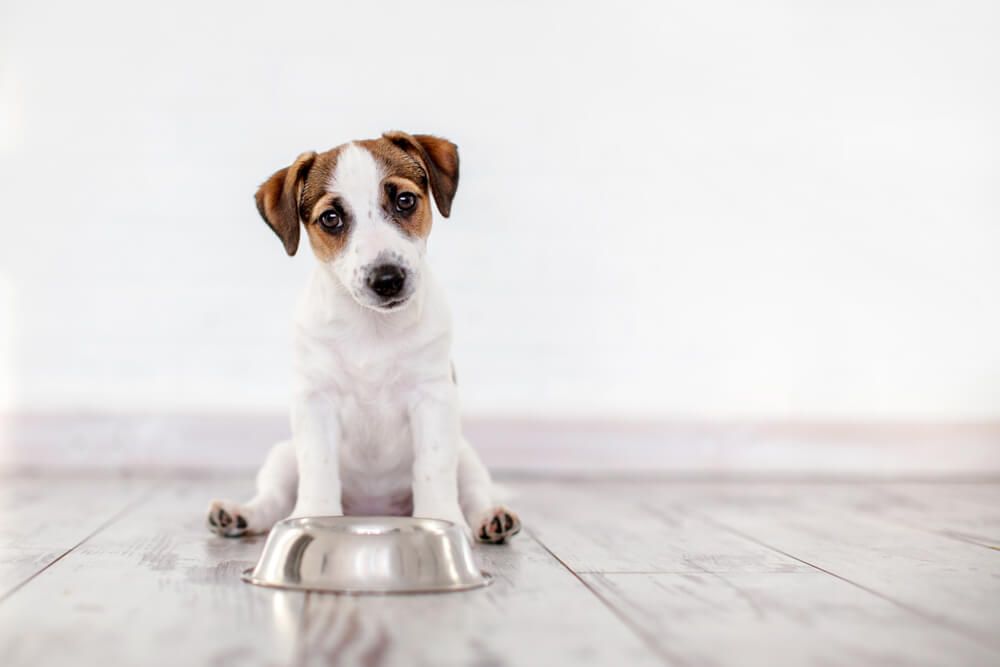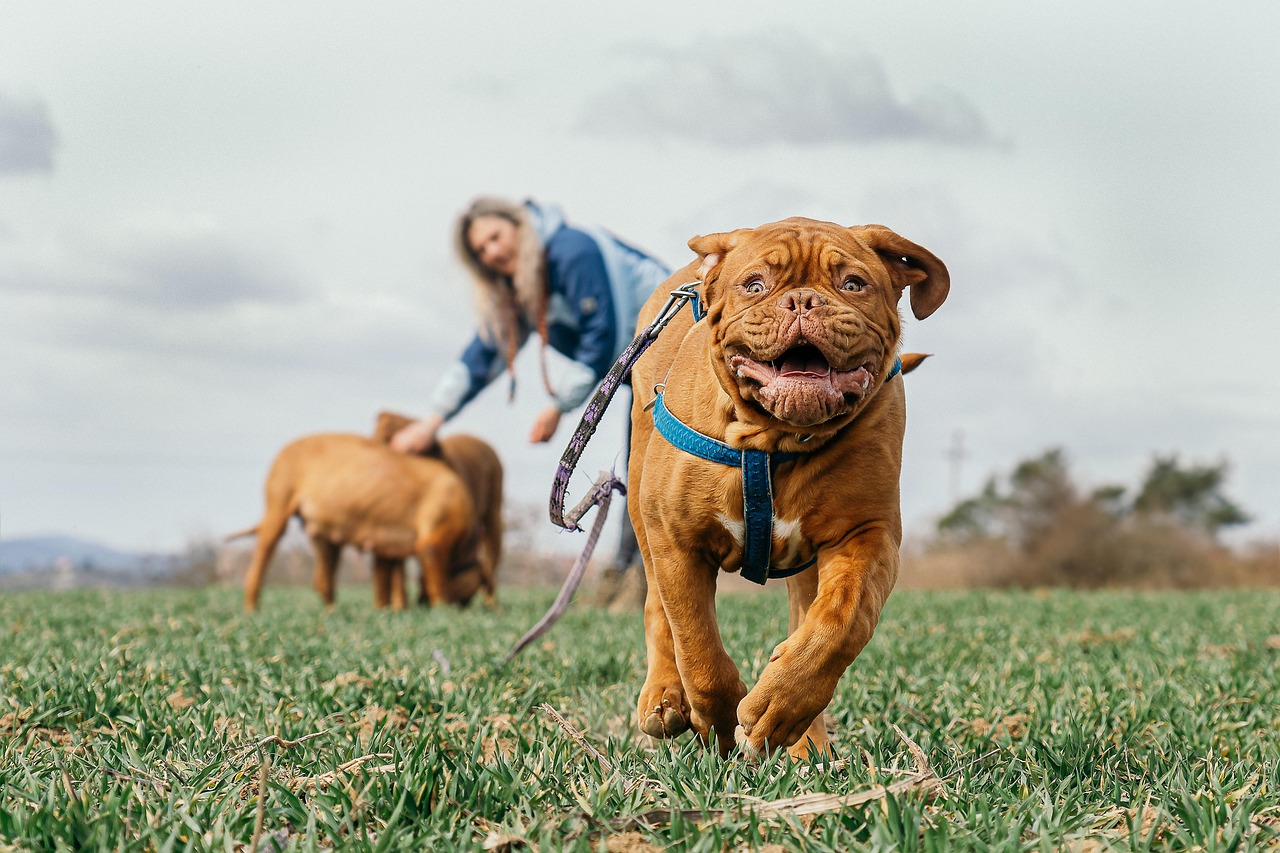Hey Ollie blog readers! We’re offering you an exclusive 60% OFF your starter box! Try now!
If it was up to your dog, they’d probably say they should get food and treats all day every day. But, as a responsible owner, you know this will only lead to obesity, diabetes and other health problems for your pup. To keep your pup in peak health, you may still wonder what the ideal schedule is for feeding your pup. If you work outside the home, you may be confined to just two meals a day or free feeding – is this healthy or ideal for your pup? We’ve broken down the answer to this complicated question.
5 general guidelines on feeding your dog
1. For most dogs, two meals a day is ideal
Most full-grown, healthy adult dogs thrive on two meals a day. Generally, these meals are eaten in the morning and in the evening. Think breakfast and dinner. You can even have your pup eat with you. If you work from home, you may consider splitting your dog’s food into three meals instead of just two. This is not a requirement, but if you eat with your pup, it might make your life easier.
2. Avoid only one meal a day or free feeding in most cases
Some dogs can get away with only eating once per day, but breeds who are prone to bloat should especially avoid this as large meals can trigger bloat. On the other extreme, free-feeding is when your pup has access to food at all times. This can lead to dogs eating more, gaining weight or even illness if you leave wet or fresh food out for too long. When feeding wet or fresh food, refer to food safety guidelines and refrigerate unused portions of food as directed.
3. Measure your dog’s food to avoid overfeeding
Just like you need portion control, so does your dog. Figure out how much your pup should be eating per day and divide that by the number of meals you feed. If your pup needs a cup of food each day, and they eat two meals per day, you will feed one cup at each meal.
4. Feed wet food, dry food, fresh food or a mixture of the two
There are pros and cons to each option. While dry food is the most convenient due to the fact that it is shelf-stable even when opened, fresh food may be the most nutrient-dense option for your pup. With a fresh food like Ollie, you can tailor your pet’s diet to their needs. Ollie will recommend specific proteins and tell you how to serve the perfect portion at every meal. You have to weigh the pros and cons of each type of food along with other factors including your budget and lifestyle. In addition to convenience, dry food is generally a more cost-effective option for most dog owners. To keep costs down but get the benefits of wet food or fresh food, some owners use a practice called topping. This is when you add some wet or fresh food on top of dry kibble. This way you get the best of both worlds but your pup is accustomed to dry food if the wet or fresh is not easily available. There are caloric and portion size differences between the different types of food, you may need to do a little math to get to the right serving when using the topping method of feeding to avoid overfeeding.

5. Consider treats as part of your dog’s overall diet
Another mistake many pet parents make is not factoring treats into their pet’s diet. If you have an adult dog, who doesnt eat that many treats, this might not be a huge issue. For puppies in obedience classes, the day your pup goes to class you might need to reduce portion sizes at mealtime to account for an increase in calories from the treats you use in class.Another consideration is not feeding your pup right before class – you don’t want them to be full and unmotivated to work. Think about going for a workout right after a large meal. Unpleasant, right? If your dog does any kind of training with food rewards this will also be true. If your pup is allowed to indulge in some ‘people food’ in addition to their food, you should also include this in your pet’s overall nutrition. While feeding table scraps might not be the best idea as our food can be cooked in sauces or with seasoning including garlic or onions that can make your pup sick, sharing fresh fruit, vegetables or even grilled meat like chicken, lean steak or some fish can have health benefits for your dog.
If your pup is eating too quickly – find a way to help them slow down
Not only can eating too quickly lead to bloat or vomiting, but it can also cause other less serious digestive issues like burping or gas. To help your pup slow down at mealtime, consider a slow feeder, puzzle feeder or just break up the meal into 3-4 parts and feed one at a time so your pup doesn’t eat too quickly. While it’s great that they love their food, you don’t want it to cause digestive issues.

Different breeds have different dietary needs
If you assume that Great Danes have very different dietary needs than Pugs, you’re probably correct. When shopping for dog food, you might have noticed that some food is formulated for large breeds and other food is formulated for small breed dogs. This is due to the different dietary needs of different breeds. Smaller dogs can have faster metabolisms than large breed dogs. They also have smaller mouths and jaws, this means that some food manufacturers make food specifically formulated for their mouths. Think smaller pieces of kibble.
A priority for larger breed dogs is ensuring their bones grow correctly and they get enough calcium to keep them healthy. Large breed dogs are also more prone to bloat than smaller breeds. Larger breed dogs can handle bigger pieces of kibble and if you feed dry food to your dog you may notice the increased kibble size when feeding a large breed dog food. While larger kibble size is not the only difference, it is the most obviously visual difference.
Notes on optimal feeding schedules
While the guidelines in this article address adult dogs, if you have a puppy under one year old, you will need to feed them more frequently.
If you are still feeling unsure about how often or how much to feed your dog or puppy, contact your veterinarian. He or she will be able to give the best recommendation for your pup. Your vet knows your pup, has a detailed rundown of their health history and other key information that they will need to give you the best recommendation.
The Ollie blog is devoted to helping pet parents lead healthier lives with their pups. If you want to learn more about our fresh, human-grade food, check out MyOllie.com.
Tagged As:

The nutrition your dog needs,
the food they want.

Enjoying our articles? Subscribe our Newsletters and get new articles directly to your inbox
You might also like
23 September 2025
6 MINS READ
Back to School: Training Your Dog at Any Age
As we hit back-to-school season rolls around, it’s not just kids who benefit from sharpening their skills and learning something new—our dogs can, too! Training isn’t limited to puppies or p…
by Ollie Pets
23 September 2025
7 MINS READ
Lace Up and Leash Up: A Beginner’s Guide to Running with Your Dog
Running is one of the simplest ways to stay active, and it’s even better with a canine companion. Not only does running with your dog keep you both in great shape, it also strengthens your bond …
by Ollie Pets
13 May 2025
8 MINS READ
Puppy Training Guide & Behavior Timeline
Bringing home a puppy is pure magic. It’s also pure chaos—tiny teeth, zoomies, accidents in the house, and moments that make you wonder if you’re raising a future genius or a tiny tornado. …
by Ollie Pets







